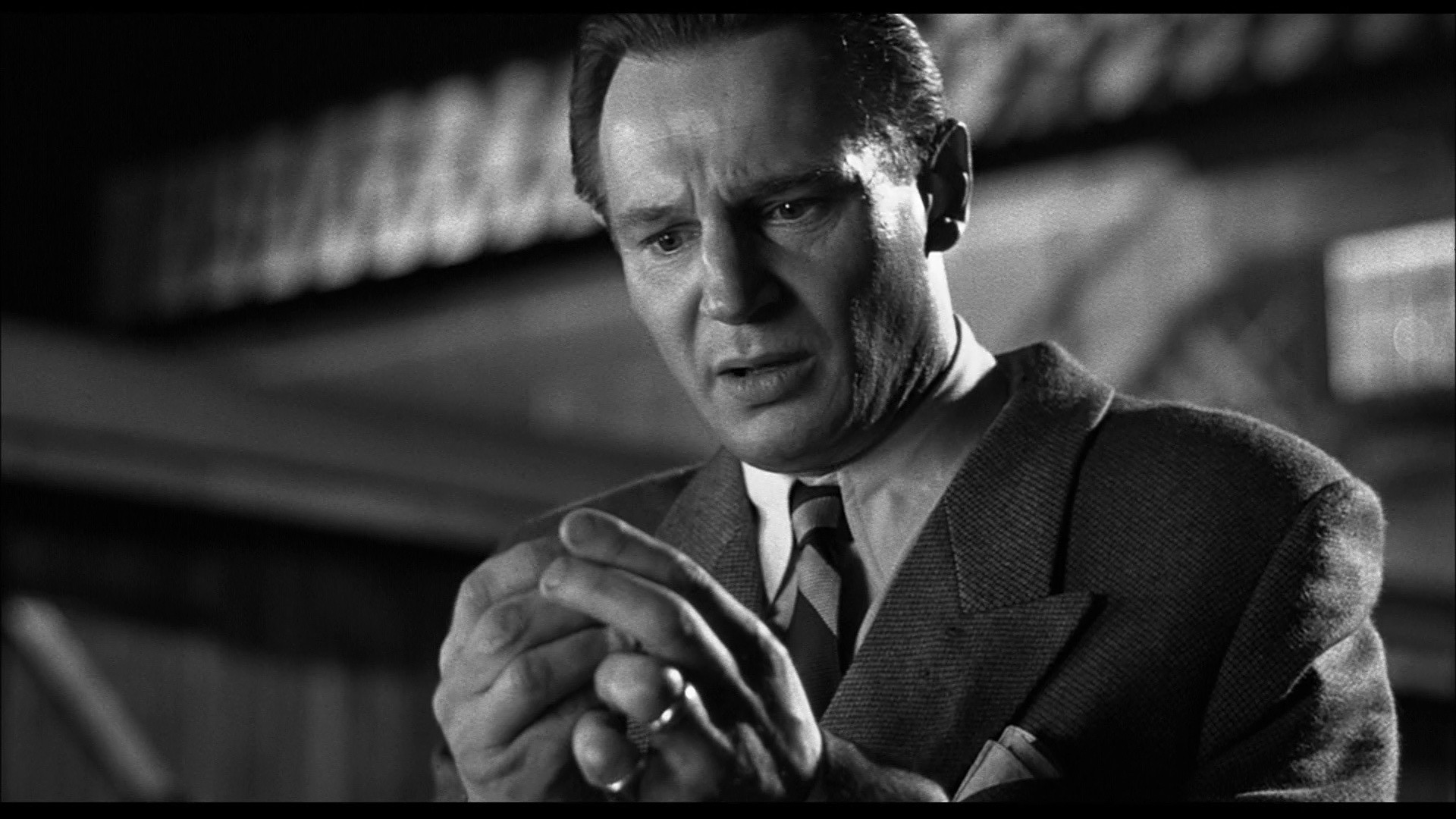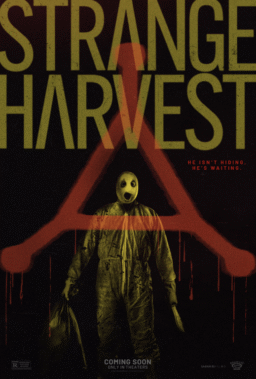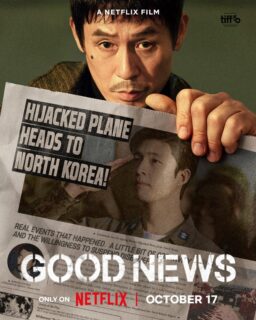Film critics have both the educational blessing and the soul-crushing curse of watching a lot of Holocaust films, and they mostly come in two varieties. Some, like “The Pianist,” “The Survivor,” “In Darkness,” and “Defiance,” are survival stories, usually showing a single character or a small group navigating the breadth of inhumanity surrounding them, and somehow living through it. Others, like “Son of Saul” and the new “The Zone of Interest”—or documentaries like “Night and Fog” and “Shoah”—are bleak, harrowing viewing experiences that emphasize the fact that survival sadly wasn’t the reality that most European Jews experienced. And then there’s “Schindler’s List,” which somehow navigated both of these realities at the same time, and did so for a mass audience.
Released thirty years ago last month, “Schindler’s List” went on to become a genuine blockbuster, finishing fourth at the international box office for 1993 (behind only “Jurassic Park,” “Mrs. Doubtfire,” and “The Fugitive”). It also became an Oscar juggernaut, with 12 nominations and seven wins, including Best Picture and Steven Spielberg’s long-awaited first win for Best Director. Rewatching “Schindler’s List” today, I’m once again staggered at how it balances both hope and hopelessness more effectively than perhaps any other film ever has. It’s a story that concludes with one of the strongest and most unforgettable sequences of hope to ever grace cinema screens, but the journey to that catharsis submerges the viewer in nearly three hours of genocide, uncompromising in its portrayal.
The film was adapted from Thomas Keneally’s 1982 historical novel, Schindler’s Ark, which detailed how Oskar Schindler, a German industrialist and member of the Nazi party, transitioned from war profiteering off Jewish slave labor in the early years of WWII, to eventually spending his fortune to buy the lives of 1,200 Jews from the Nazis in the closing months of the war, saving them from near-certain death at Auschwitz. Universal Studios quickly bought the film rights to the book and Spielberg was attached almost immediately, but he didn’t believe he was ready for the material, and he spent years trying to recruit other directors onto the project—including Martin Scorsese, Sydney Pollack, and Roman Polanski (a Holocaust survivor who eventually directed 2002’s “The Pianist”)—before finally deciding to mount it himself.

The legacy of the film looms large in several different ways, both for the film industry and for our collective understanding and preservation of Holocaust stories. Most obviously, it led to Spielberg establishing the Shoah Foundation in 1994, which has become one of the world’s most invaluable resources for Holocaust accounts, research, and education. But given how much “Schindler’s List” became synonymous for audiences with Hollywood prestige and awards success in the ‘90s, the film’s critical legacy has become curiously almost non-existent. For example, it has never appeared on one of Sight & Sound’s once-per-decade polls of the greatest films of all time, including 2022’s extended top 250 list.
In part this may be a byproduct of Spielberg himself, whose films have always had a slightly complicated relationship with the critical community because of how ubiquitous and populist they lean, to the extent that nearly all of his films performed poorly in the last Sight & Sound poll (“Jaws” placed the highest, at #104). Today, “Schindler’s List” seems to exist almost beyond criticism or praise, neither lauded as an essential part of film history nor dissected with revisionist critical hot takes. And that lack of a critical legacy even extends to this anniversary; a few years ago, I wrote about the 20th anniversary of “The Royal Tenenbaums,” and I was disappointed that my piece got lost amid seemingly every other publication on Earth writing a similar piece the same week. But for “Schindler’s List,” the 30th anniversary has barely merited a mention anywhere, with only The Guardian opting to revisit it.
But that wasn’t always the case, and those who didn’t see it play out in real time may be shocked at some of the critical backlash “Schindler’s List” received in 1993. A few prominent critics and directors really took it to task, with Claude Lanzmann, director of the nine-hour Holocaust documentary “Shoah” (1985), calling it “kitschy melodrama” and a fictionalized “transgression.” But Roger Ebert loved it, and in his 2001 “Great Movies” essay on the film, he retorted that “the medium of film does not exist unless there is an audience between the projector and the screen.” For as astonishing a historical achievement as “Shoah” is—and it’s surely one of the most important films ever made (not just to the cinematic art form, but to humanity)—it never found audiences beyond small academic settings.

Though Ebert also had some questions about the film. He was unsure of the film’s juxtaposition between Oskar Schindler (played by Liam Neeson), who saved the lives of 1,200 Jews, and Amon Göth (Ralph Fiennes), who might have personally murdered just as many. In his unrelenting sadism, Göth was so evil that Ebert worried it might have diminished the reality of most Nazis as normal people who were programmed into evil deeds, rather than born psychopaths like Göth. But I believe the film needed Göth to be just as he was, for a few reasons.
The most important is simple accuracy. It’s historical fact that Göth was in charge of the Polish camp (Kraków-Płaszów) that Schindler took Jewish workers from, and it’s historical fact that Göth really was that sadistic. (Göth was the first person in history convicted of homicide at a war crimes trial, for “personally killing, maiming and torturing a substantial, albeit unidentified number of people.”) To downplay Göth’s inherent evil in the service of movie plotting would have been a disservice to a historical record that deserves as much accuracy as possible.
But perhaps just as important is the effect witnessing Göth’s abject evil had upon Schindler. Spielberg wisely avoids any sort of interiority with Schindler, and as a result the film doesn’t attempt to truly answer the questions about Schindler’s dramatic character transition. We simply watch a charismatic and well-connected man begin the 1940s as a war profiteer who personally made millions by staffing his factory with Jewish slave labor, and then by 1945 he had spent every last dime he had to rescue 1,200 Jews from almost-certain death at Auschwitz—which is where the remaining Kraków-Płaszów Jews were sent when the labor camp was closed in January of 1945—hiding them out in a factory that secretly produced nothing. No one knows for sure what caused this change, but perhaps spending years witnessing the actions of a pure evil like Amon Göth inspired Schindler to an opposite path.

Other choices in the film also merit debate and analysis. One thing that particularly struck me on this viewing was the sexualized nudity of the Nazi women that Schindler and Göth sleep with in the film. There have been Holocaust films with sex before (“Black Book” and “The Night Porter” quickly come to mind), but they’ve all been cases of either Nazis overtly raping Jews, or, at the very least, the result of a highly problematic power dynamic between the two. “Schindler’s List” remains the only Holocaust film I’ve seen with sex between two Nazis, where the sex is really just a consensual act of pleasure, and it’s jarring. It initially seems out of place (especially for Spielberg, whose 50-year filmmaking career has been virtually devoid of sex scenes). But it’s jarring in a way that’s tremendously effective. These people were having sex while they were committing genocide. The genocide, it seems, did not kill the mood. Even Jonathan Glazer’s brilliant new film, “The Zone of Interest” (which is about the domestic life of the commandant of Auschwitz and his wife), never portrays that.
The most debated of Spielberg’s choices is undoubtedly the little girl in the red coat, one of the only instances of color in the otherwise black-and-white film. We see her during the 1943 Nazi liquidation of the Jewish ghetto in Krakow, and then later among a pile of dead bodies. Many feel this was so heavy-handed that it takes you out of the film. I think it reminds us of reality. Janusz Kamiński’s Oscar-winning cinematography in the film is consistently stunning, but one effect of black and white visuals is placing things firmly into a long-ago past. And it’s easy to think of the Holocaust as yesteryear, but we must remember how recently it really was. For example, Amon Göth’s daughter is still alive today (and she’s been a willing and articulate participant in documentaries about the descendants of Nazi leaders, like the deeply sad yet undeniably powerful “Hitler’s Children”).
Thinking about that recency is particularly chilling in early 2024, just a few months after the Jewish community suffered its worst attack since the Holocaust. And Israeli leadership has responded to that attack in a way that many describe as genocidal, calling into question whether anyone, on either side, has really learned or retained any lessons from the Holocaust about the xenophobic demonizing of marginalized groups. Personally, it’s hard not to wonder what subtle effect the absence of a truly ubiquitous Holocaust film in the three decades since “Schindler’s List” may have had on the steady rise in antisemitism we’ve seen during that same span. If you believe Holocaust education has the power to help stem the tide of hate, there was no bigger asset to that education than “Schindler’s List,” which made over $300 million at the global box office in 1993. And I don’t cite that as an achievement of studio profit, but rather as an achievement of viewer volume.

How many movie tickets did $300 million equate to in 1993 dollars? A lot. One wishes that many people showed an interest in learning about the Holocaust today and sitting uncomfortably with its stark realities. In 2013, most of the people I know refused to see “12 Years a Slave,” because they said it was just too depressing. But in 1993, many of those same people flocked to the theater for “Schindler’s List.” (I know this is an imperfect comparison, and White Guilt is certainly a significant element of what kept audiences from “12 Years a Slave,” but it also feels like a dwindling percentage of people each year are willing to subject themselves to real discomfort from a movie. Not when social media dopamine is waiting right in our pocket, 24/7.)
This is also an interesting time to think about the legacy of “Schindler’s List” because “The Zone of Interest” opened in limited release on December 15, thirty years to the day after “Schindler’s List” opened wide in 1993. What kind of audience will it find as it expands to more markets in the coming weeks? It’s much more obviously an art film, with a foreign cast and not much plot to speak of, and by a filmmaker who’s far less well-known than Spielberg. Though “The Zone of Interest” doesn’t feature a single on-screen death, it’s arguably one of the most spine-chilling and difficult films ever made. While it’s reductive to ever refer to “Schindler’s List” as “entertainment,” that feels like a vaguely appropriate descriptor when compared to “Zone.” For as great as “The Zone of Interest” is (and I think it’s the best film of 2023), it’s exceedingly likely that it will play almost exclusively to a small echo chamber of viewers who already understand antisemitism and the banality of evil. But “Schindler’s List” helped bring an understanding of those evils to the masses—to people who hadn’t already learned those lessons, and otherwise might never have.
And that’s part of “Schindler’s” greatness. It tackles arguably the most depressing subject imaginable and portrays that subject with uncompromising accuracy, and yet it leaves you with such hope that the whole 196-minute venture felt palatable for mass consumption. For as much death and inhumanity as there is on the screen, the final message of the film is how those 1,200 Jews saved by Oskar Schindler had, by 1993, multiplied to 6,000. Thirty years on, that number may have doubled.











